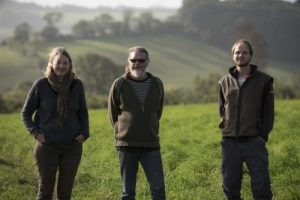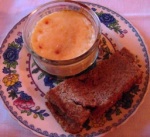
Tart, textured, light and fresh, this turned out to be a winner.
(Gosh, food blogs are so glossy these days. Real Food Lover does not fit that category as my pic above demonstrates).
I am here to record recipes to remember.
So here are the layers from bottom to top:
- Mince pies (in this case, four gluten-free ones) crushed with back of a spoon with added sultanas
- The juice from a tin of fruit cocktail (see below) in a small saucepan with 3 generous teaspoons of marmalade, a few teaspoons of sugar, lemon juice and a teaspoon of sherry boiled and bubbling until the liquid reduced; then spooned over the crushed mince pies
- Small tin of fruit cocktail in their own juices with no added sweetness, drained
- Plus fresh blueberries (I used frozen) for essential tartness
- Custard (I used 400g shop-bought because ease and time were of the essence)
- 500g double cream, whipped (NutriBullet was great for this) was the final layer. Chill in fridge.
The time it took (A.I. suggested I add this bit and an intro. Ha. Ironic laugh): in total, it took about 30 mins to prepare, the longest bit was condensing the liquid.
The end result was a pudding of different textures (light and crunchy from pie and fruit) and tastes (sweetness from pie and custard offset by bitter-tartness from marmalade and blueberries).
Delicious – and easy to make. Thus, it is a keeper.












![Reblog this post [with Zemanta]](https://i0.wp.com/img.zemanta.com/reblog_b.png)
